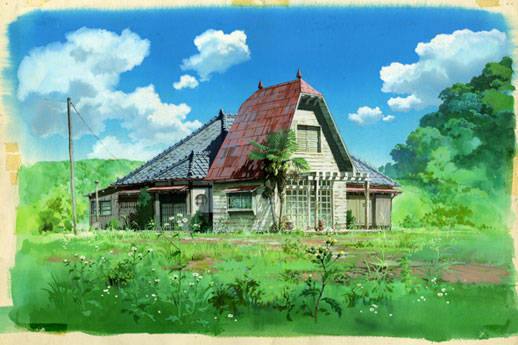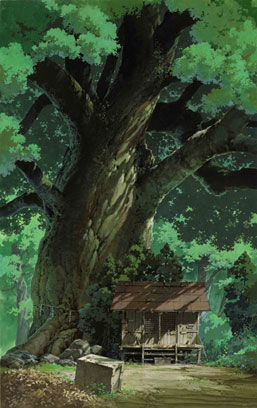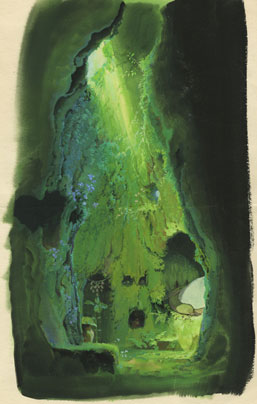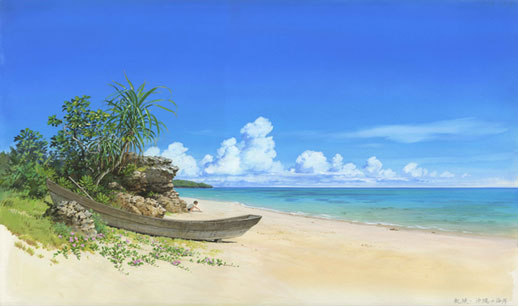Kazuo Oga – The Man Who Drew Totoro’s Forest

Backgrounds are a subtle thing. Without them, films would not have the same desired effect. What would Roman Holiday be without Rome or Ocean’s Thirteen without Las Vegas? But being backgrounds, they are not meant to be stared at and focused on. This exhibit brings the background to the foreground.
Kazuo Oga is one of those inconspicuously famous men. His work has been distributed globally, yet if the average citizen were asked who he is they probably wouldn’t know him. If you phrase the question a little differently and ask if they know My Neighbor Totoro or Spirited Away, a look of recognition would instantly cross their face. “Oh yeah, I know those,” they would say. And the next response would be, “He was the one who drew the backgrounds.”


There is no doubting Oga’s talent. It is amazing to see what vibrant colors he has achieved with watercolor. From a distance, visitors may find themselves doing a double take at some of his works, as they are sometimes photographic in their realism. This intricate use of color is probably best evidenced in Only Yesterday in which lighter and fuzzier colors of the lead character’s past are contrasted the robust colors of her present. With over 600 pieces on display, including his off-screen works such as pencil sketches of Nobunaga’s castle, Azuchi-jo and his illustrations in children’s magazine and picture books, visitors to this exhibition will not leave in want of more examples of his skills.

Probably the best aspect of the show is the novelty of its presentation that provides a little something for all ages. For instance, visitors are ushered into a dark corridor where they can peek into a hole and see a re-creation of Totoro’s home, complete with a big sleeping stuffed Totoro. In another set, visitors can look out of the windows of a plane to see the town depicted in Porco Rossi. For those interested in the technical aspect of the animation, there is even a special room featuring a demonstration of how the backgrounds get transferred to moving animation. At various points during the exhibit, there are huge backdrops of Only Yesterday, Pompoko, and My Neighbor Totoro, where children can feel as though they are the characters in the movies. The show culminates with a space where origami instructions and paper are provided for free so that you can make your own little Totoro.
Even though this show is a must see, it is probably best to avoid going on weekends. Even the most patient of people may find themselves annoyed by the forty minute wait before even being able to enter the exhibit, with ushers constantly asking visitors to move five inches closer to the person in front. For maximum enjoyment, guests should come on a weekday in a pair of comfortable shoes and check their claustrophobia at the door.
Melaney Lee
Melaney Lee



